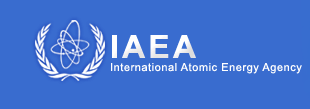Speaker
Mr
Paul Terry
(USA)
Description
The regulation of ion temperature gradient (ITG) turbulence by zonal flows, which reduces turbulence levels and transport, is shown to involve enhanced energy transfer from the insta-bil¬ity to damped modes in the low wavenumber range of the instability, with zonal flows acting as a catalyst. Energy transfer is dominated by the nonlinear triplet interaction of the unstable mode, a zonal flow, and stable modes at three interacting perpendicular wavenum-bers. This holds for both fluid and gyrokinetic models. In the former a highly efficient transfer, enabled by minimization of the nonlinear three-wave frequency sum, a large coupling coefficient, and large zonal flow amplitude, allows saturation at a much lower level than possible when zonal flows are removed and energy transfer to damped modes is less efficient. Zonal flow shearing is not an important aspect of this process. The interaction of the unstable mode and zonal flows excites damped modes with tearing parity. At finite beta, these make the magnetic field stochastic and drive magnetic fluctuation-induced electron thermal transport. Because the tearing component is excited through coupling with zonal flows, zonal flows have the heterodox property of enhancing transport, albeit in the electron channel through magnetic stochas¬ticity. In the main ion thermal transport channel damped modes reduce transport levels relative to quasilinear theory. In gyrokinetic simulations of ITG turbulence, stronger damped mode excitation, leading to a larger ratio of quasilinear heat flux to true flux, occurs for weaker magnetic shear. This ratio also increases in Tore Supra at weak magnetic shear, and is associated with stronger zonal flow excitation, consis¬tent with the interaction of damped modes and zonal flows.
Country or International Organization of Primary Author
United States
Author
Mr
Paul Terry
(USA)
Co-authors
Dr
David Hatch
(Max Planck Institute for Plasma Physics)
Dr
Frank Jenko
(Max Planck Institute for Plasma Physics)
Dr
Hauke Doerk
(Max Planck Institute for Plasma Physics)
Dr
Juhyung Kim
(University of Wisconsin-Madison)
Mr
Kiritkumar Makwana
(University of Wisconsin-Madison)
Dr
Moritz Pueschel
(University of Wisconsin-Madison)
Dr
William Nevins
(Lawrence Livermore National Laboratory)

